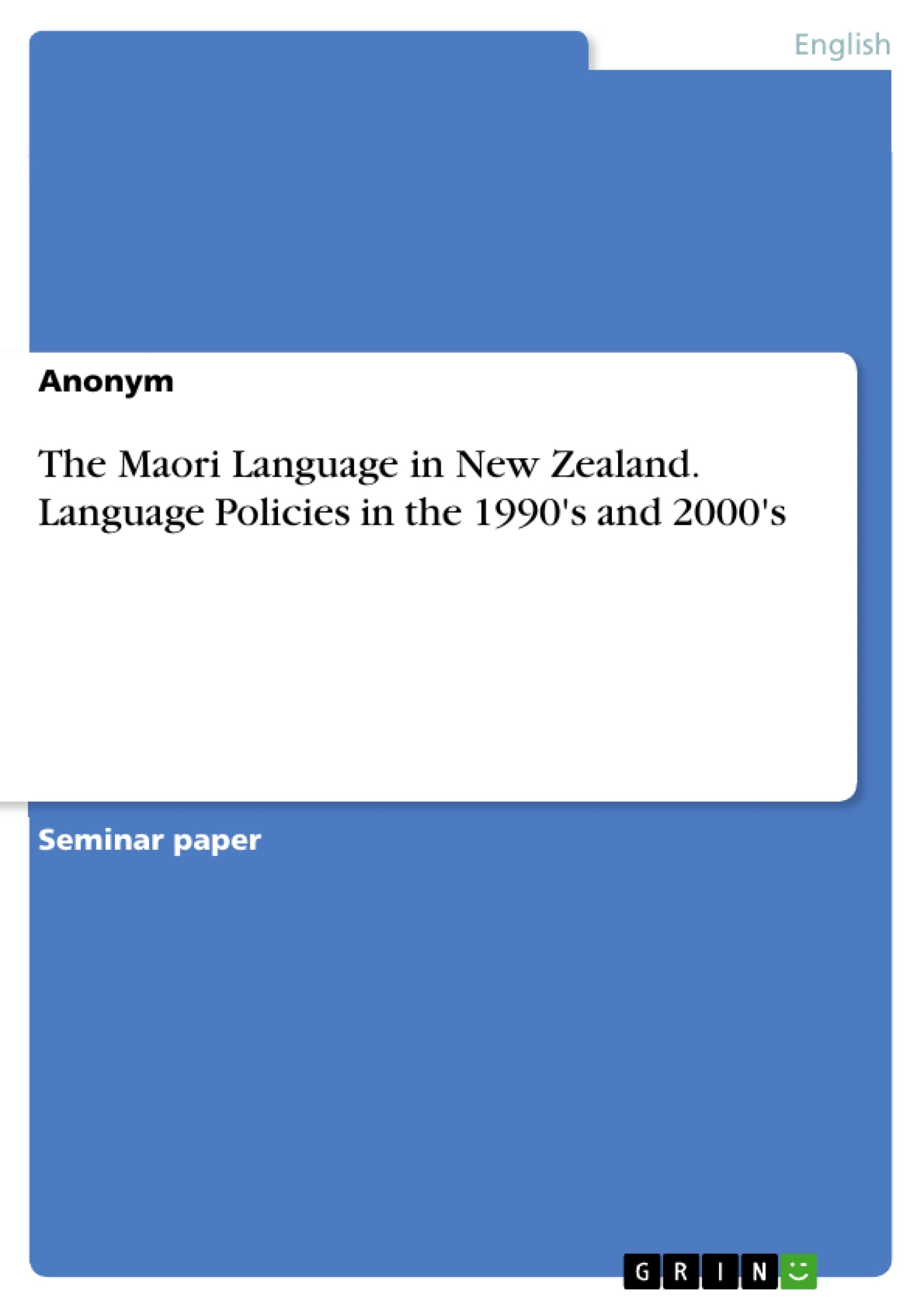Baram in Nepal, Mapuche in Argentina, or the Cherokee language in the United States. All of these languages are spoken by a minority of people in their country and do not have the status of an official language. Like in these countries, New Zealand has a minority with a language that is threatened: the Maoris.
The last years of the 20th century and the first years of the 21st century have an important meaning in the fight for the preservation of Maori culture and language. This essay’s aim is to examine this period of time concerning the language policies that were made or changed during that time.
How did language policy concerning the Maori language change at the turn of the 21st century in New Zealand? In order to be able to answer this question, the essay first focuses on the historical background, specifically at precolonial times, at the signing of the Treaty of Waitangi as a consequence of the colonization by England, and the early 20th century. After this, language policies in the 1990's and early 2000's will be discussed by looking at the policy changes that were made concerning the Maori language during that time. In the end, future prospects for the next 50 years will be given.
Inhaltsverzeichnis (Table of Contents)
- Introduction
- Languages in New Zealand
- Historical Background
- Precolonialism
- The Treaty of Waitangi
- The early 20th century
- Language policies in the 1990's and 2000's
- Changes in language policies
- Importance of Maori language and culture
- Problems
- Future prospects
Zielsetzung und Themenschwerpunkte (Objectives and Key Themes)
This essay examines the language policies concerning the Maori language in New Zealand, specifically focusing on the period at the turn of the 21st century. It aims to understand how these policies changed and the factors that influenced their development. The essay explores the historical background, including precolonial times, the signing of the Treaty of Waitangi, and language policies implemented in the early 20th century. It then investigates the specific policies of the 1990s and early 2000s, analyzing their impact on the Maori language and culture.
- The impact of colonization on the Maori language and culture
- The role of the Treaty of Waitangi in language policy
- The evolution of language policies in New Zealand
- The challenges faced by the Maori language and efforts to preserve it
- The importance of cultural identity and the role of language in maintaining it
Zusammenfassung der Kapitel (Chapter Summaries)
The introduction sets the context for the essay by highlighting the plight of minority languages worldwide, using examples like Baram in Nepal and Cherokee in the United States. It introduces the Maori language as a threatened language in New Zealand and frames the essay's aim to examine the language policies surrounding it. The essay discusses the historical context of Maori language, highlighting its evolution from Polynesian to Maori, and the impact of European arrival and colonization. The Treaty of Waitangi's signing in 1840 is discussed as a turning point, signifying the beginning of British colonial administration over New Zealand and its impact on the Maori language and culture.
The essay then delves into the language policies of the 1990s and early 2000s. It analyzes the changes in language policies, exploring the reasons behind them and their implications for the Maori language. It highlights the importance of the Maori language and culture, underscoring their significance for Maori identity and the efforts made to preserve them. The essay also addresses the challenges faced by language policy, such as the continued dominance of English and the persistent threat to the Maori language.
Schlüsselwörter (Keywords)
Maori language, New Zealand, language policy, colonization, Treaty of Waitangi, cultural identity, minority language, language revitalization, language preservation, English, Maori culture, bilingualism.
- Arbeit zitieren
- Anonym (Autor:in), 2017, The Maori Language in New Zealand. Language Policies in the 1990's and 2000's, München, GRIN Verlag, https://www.hausarbeiten.de/document/355741


